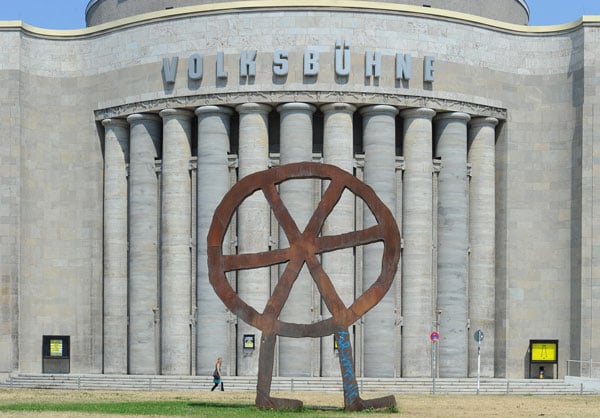The surprise announcement that the veteran artistic director of Berlin's legendary Volksbühne (People's Stage), Frank Castorf, would be bowing out in 2017 after a quarter century at the helm sent a jolt through the once-divided city.
Berlin authorities, who heavily subsidise the avant-garde theatre and Castorf's daring, politically charged productions, declined to keep the strong-willed iconoclast much beyond the end of his current contract in 2016.
Talks are underway to find a director of the theatre, which was founded in 1914 to entertain the city's working class.
The name that keeps surfacing is Chris Dercon, the current director of London's Tate Modern, an option not popular with everyone in Berlin's sometimes fractious artistic community.
The debate has exposed serious tensions between the headstrong leaders of the city's cultural institutions and the coalition government of new mayor Michael Müller, in office since December.
It is no accident that the Volksbühne has become the lightning rod in the dispute.
Rebuilt after World War II in an imposing Stalinist style using remnants of Hitler's destroyed chancellery, the Volksbühne prides itself on caustic commentary on political and capitalist hypocrisy.
Critics wonder whether the Belgium-born director of a London art museum can bring the radical sensibility and awareness of Berlin's tumultuous history that is woven into the fabric of the theatre.
Castorf, 63, was a prominent artist in communist East Germany before taking the reins of the Volksbühne in 1992, three years after the fall of the Berlin Wall.
His stagings are often bold, controversial and lengthy, and during his nearly 25 years at the Volksbühne, it has become one of Europe's leading theatres.
'Sad old man'
The patriarch of the Berlin theatre scene, Claus Peymann of Bertolt Brecht's renowned Berliner Ensemble, slammed Castorf's dismissal in a letter addressed to Mayor Müller, a technocrat who took over from the charismatic Klaus Wowereit after 13 years in office.
In the missive which was widely published in the German press, Peymann said that the Volksbühne risked becoming an "event venue like all the others".
Taking aim in particular at the city's new top culture official, Tim Renner, Peymann called him "the worst casting choice in a decade" and blasted his proposals including live streaming of theatre premieres and a hike in ticket prices for stage plays and opera.
Renner fired back, telling Berlin public radio that Peymann was an "old, sad man who is flailing" and said Dercon could serve as one member of an experienced management team "with deep knowledge of theatre".
Peymann, 77, has led the Berliner Ensemble since 1999 and is also set to leave his post in 2017.
Castorf has also attacked Renner, the 50-year-old former head of Universal Music in Germany, for his cultural "ignorance" and "lack of professionalism".
The dispute has shaped up as a generational conflict in a city that has struggled under massive debt since reunification in 1990.
The Volksbühne is one of Berlin's most heavily subsidised theatres, to the tune of 17 million euros ($19 million) per year, with audience numbers slipping despite relatively low picket prices.
Berlin, which has a population of 3.4 million people and public debt of nearly 62 billion euros, paid out 107 million euros ($117 million) in support to the city's theatres this year.



 Please whitelist us to continue reading.
Please whitelist us to continue reading.
Member comments